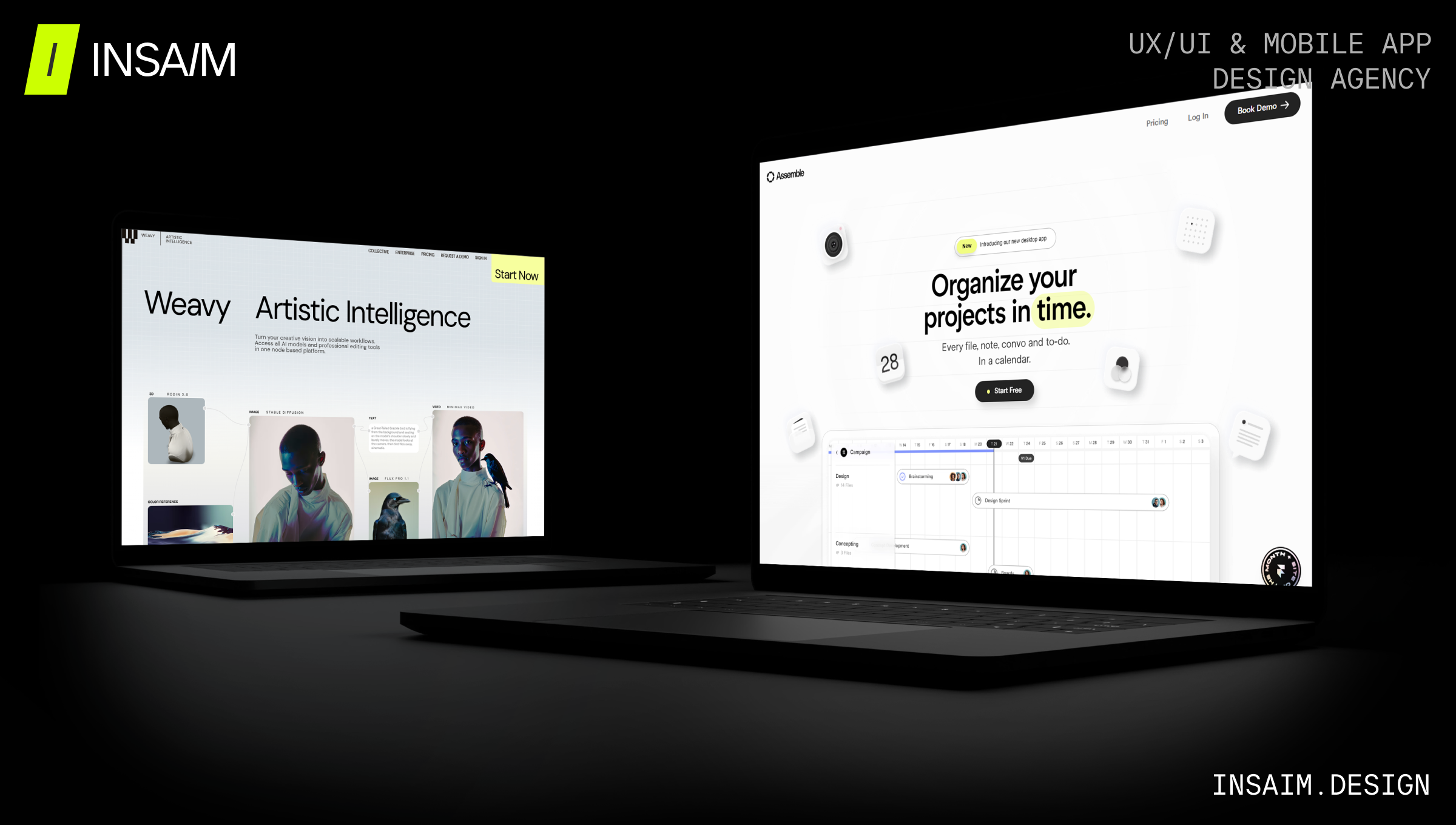SaaS products dominate how businesses operate and interact online, and a high-performing SaaS website is now a critical lever for growth and user trust. As a leading digital design agency, INSAIM DESIGN crafts SaaS solutions that blend creativity, technology, and measurable impact for tech startups and scaling companies. Let’s dive into the key trends and actionable strategies shaping SaaS website experiences in 2025—plus examples and tips to future-proof your digital presence.
What Is a SaaS Website?
A SaaS website serves as the digital backbone for software companies who deliver cloud-based applications. It’s where users discover your solution, evaluate features, sign up, and return for support. An effective SaaS site combines strong UX/UI, clear messaging, and seamless conversion paths, turning visitors into loyal users.
Explore our article on top SaaS startups excelling in UX and discover valuable insights to elevate your own user experience.

Top SaaS Website Trends and Best Practices for 2025
Minimalist Design Elements
Modern SaaS websites thrive on clarity. Minimalist design—clean layouts, ample white space, and focused content—improves readability and guides users effortlessly through your offering.

Interactive Content & Personalization
Dynamic elements like animated demos, interactive product tours, and personalized onboarding forms increase engagement. Personalisation is critical: according to Bundeld, 50% of SaaS companies now integrate AI into marketing workflows to enhance targeting and personalisation.
Mobile Optimization
With a growing share of traffic from mobile devices, responsiveness across every platform is mandatory. Mobile devices account for approximately 62.5% of global web traffic (Statista, 2025). Your SaaS site must deliver a stellar experience—no matter the screen size. Learn more about mobile-first design for SaaS.

Clear Messaging
State your unique value proposition concisely. Use direct headlines, benefit-driven statements, and simple navigation to answer prospects’ core questions immediately. Low funnel conversion rates in SaaS make clarity essential. (UXCam, 2025)
Trust & Social Proof
Case studies, client logos, and transparent reviews build confidence for new users. Integration concerns remain critical: 39% of buyers prioritize integration with existing software (Vena Solutions, 2025). Highlighting trust signals like security badges and “Wall of Love” testimonials improves credibility.
Conversion-Focused Calls-to-Action (CTAs)
Every page should guide users toward a goal—trial requests, demo booking, or sign-up. Design standout CTAs, minimise form fields, and use AI-powered chatbots to support the journey. Conversion rates for SaaS websites vary, but top performers can reach 7–10% in lead generation. (Klickflow, 2025)

Leading B2B SaaS Websites: Inspiration & Analysis
Case Study Highlights: INSAIM’s B2B SaaS design for Tabopit and other clients shows how value-driven landing pages, conversion-oriented flows, and advanced AI integrations drive engagement.
Key Features: Modular templates, proactive feedback channels, and robust analytics dashboards.
Best Templates & Builders: Custom Webflow and Framer templates support easy updates, scalability, and future design iteration.
B2C SaaS Websites: Driving Engagement & Retention
Strategies: Gamification, frictionless sign-up, and in-app support drive user retention.
Design Practices: Delightful animations, personalised dashboards, and contextual help.
Evolving SaaS Marketing Websites
SEO & Content Strategy
Ranking for high-volume SaaS keywords (e.g., “cloud application development,” “best B2B SaaS websites”) is essential. Structure blog and solution pages around these terms and optimise meta titles/descriptions for search. Case studies and educational content boost authority. Organic search remains a primary traffic channel for SaaS companies. (Userp.io, 2025)
Customer Feedback Integration
Live feedback widgets, survey forms, and proactive improvement loops enable faster, user-driven enhancements. Learn more about user feedback best practices.
Future Approaches for SaaS Website Design Agencies
Custom vs. Template Builds
Custom sites deliver unique brand presence, tailored solutions, and competitive advantages. Templates offer speed and cost-efficiency — INSAIM’s Startup Pack combines both for fast iteration with a premium feel.
Innovations in SaaS Website Builders
Next-gen tools like Webflow and Framer make it easy to build, test, and scale SaaS sites empowering agencies and in-house teams alike.
Which Builder Is Best for SaaS?
INSAIM leverages both Webflow (for robust integrations, SEO control) and Framer (for creative freedom, smooth animation). Choose based on your scale, need for customization, and team workflow.
Conclusion: The Path Ahead for SaaS Websites
The SaaS landscape is evolving rapidly. To thrive, your website must combine user-centred UX/UI, smart technology, and creative branding. INSAIM DESIGN partners with SaaS leaders—bringing AI-powered, high-performing digital solutions to startups and growth-stage companies globally. Ready to drive results in 2025 and beyond? Explore our SaaS web design services and let’s talk about your vision.
FAQ:
- How do I start building a SaaS website?
Begin with a discovery phase — define your audience, map user journeys, and select a scalable tech stack. INSAIM offers trial projects and tailored workshops to jump-start design and development.
- What makes a SaaS website successful?
Clarity, speed, social proof, actionable CTAs, and ongoing engagement features.
- How important is mobile?
Mobile is critical. Mobile devices now account for 62.5% of global web traffic (Statista, 2025). Mobile-friendly SaaS websites increase engagement and conversions significantly
- How can I integrate user feedback into my SaaS site?
Use live feedback widgets, surveys, or proactive feedback loops. This allows you to make data-driven improvements, increase user satisfaction, and build trust. Learn more about user feedback best practices.
- Should I use a template or a custom build for my SaaS website?
Custom builds deliver unique branding, tailored features, and a competitive edge.
Templates offer speed, lower cost, and easier updates.
.svg)
.png)
.svg)













